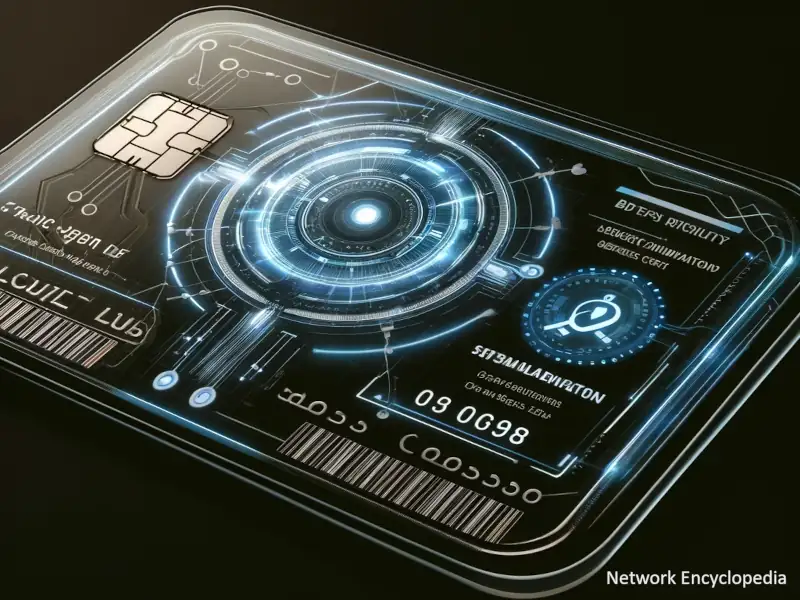Welcome to a delightful dive into the AAA Protocol, where we’re not just checking attendance for a super-exclusive club but ensuring every member meets the velvet rope standards of today’s network security. Picture yourself at the doorway to the internet’s hottest party—without the right credentials, you’re not getting in. That’s AAA for you: Authentication, Authorization, and Accounting, the three A-listers in network security protocols. In this article, we’ll unravel how AAA keeps the bad actors out while rolling out the red carpet for the VIPs. It’s about more than just saying, “You shall not pass!”—it’s knowing who can, when they did, and what they partied with while inside.

Table of Contents
- What is AAA Protocol?
- 1.1. The Basics of AAA
- 1.2. History and Evolution of AAA
- Authentication
- 2.1. How Authentication Works
- 2.2. Types of Authentication Methods
- Authorization: The VIP Pass
- 3.1. Defining Access Controls
- 3.2. Implementing Authorization Policies
- Accounting: The Party Ledger
- 4.1. Keeping Track of Network Activity
- 4.2. Importance in Network Management and Security
- AAA Protocols in Action
- 5.1. Case Studies: AAA in Enterprise Networks
- 5.2. Common Pitfalls and How to Avoid Them
- The Future of AAA Protocol
- 6.1. Emerging Trends and Technologies
- 6.2. Challenges and Opportunities Ahead
- References
1. What is AAA Protocol?
1.1. The Basics of AAA
Imagine you’re the owner of an exclusive club in the bustling heart of a metropolis. Your job isn’t just to keep the party going but also to ensure that everyone who enters has the right to be there, behaves according to the rules, and—perhaps most importantly—is noted down in your ledger for the night’s debaucheries. This is precisely what the AAA (Authentication, Authorization, and Accounting) Protocol does on a network.
Authentication is your burly bouncer at the door. It checks if the members have the right credentials (like passwords, biometrics, or keys). Think of it as the stern “ID, please?” moment that decides whether you step in or not. Authentication is about verification; ensuring that users are who they claim to be before they access a network resource.

Authorization follows closely, functioning like a discerning host who knows the club rules. Once inside, does the guest have VIP access to the private lounge? Can they hop behind the bar and mix their own drinks? Or are they restricted to the dance floor? Authorization determines the extent of access a user has within a network, making sure that everyone sticks to their roles without stepping over boundaries.
Accounting is the observant club manager, keeping an eye on everything: what time did guests arrive? What services did they use? How long did they stay? In network terms, this aspect of the AAA protocol logs what users do, providing valuable data that helps with billing, auditing, and understanding network behavior.
1.2. History and Evolution of AAA
The Early Days: Birth of a Concept
The concept of AAA (Authentication, Authorization, and Accounting) can trace its roots back to the advent of dial-up network services. In these nascent stages of networking, the primary concern was simply to verify a user’s identity over telephone lines—a far cry from today’s complex digital ecosystems. Early protocols like TACACS (Terminal Access Controller Access-Control System), developed in the 1980s, provided the framework for what would eventually evolve into more sophisticated systems.
Expanding Horizons: AAA Grows Up
As networks grew in complexity and scale, so too did the need for a more robust system. The introduction of RADIUS (Remote Authentication Dial-In User Service) in the 1990s marked a significant evolution. RADIUS expanded on the idea of authentication and introduced more comprehensive features for authorization and accounting, which were crucial for managing access in larger, more dynamic environments.
Integration and Standardization: Entering the Modern Age
The turn of the millennium saw further advancements with the development of Diameter, a protocol designed to overcome the limitations of RADIUS. Diameter offered enhanced capabilities, such as better error handling, more extensible protocols, and improved security features, setting the stage for modern network demands like mobile and IP-based applications.
Today and Beyond: AAA in the Digital Age
Today, AAA protocols are deeply integrated into almost every aspect of network management, supporting everything from enterprise systems to cloud services and IoT devices. The evolution continues as AAA systems are beginning to incorporate AI and machine learning to predict and respond to security threats dynamically.
2. Authentication: The Bouncer’s Checklist
2.1. How Authentication Works
Imagine our club’s bouncer has a high-tech security system. When someone approaches the entrance, it’s not just about checking if they have a ticket—it’s about verifying that this ticket matches the person who claims to own it. In network terms, this is the essence of how authentication works. It’s a process designed to ensure that a user, service, or device has the correct credentials to access a particular network resource.
Here’s the breakdown:
- Credential Submission: This is the step where the user presents their proof of identity, such as a username and password, a security token, a biometric feature, or even a combination of these.
- Credential Verification: The system checks the submitted credentials against a secure database. If the credentials match, access is granted. If not, access is denied. This step might involve some complex processes, like cryptographic validation in more secure systems.
- Feedback and Access: After verification, the user receives feedback—access granted or denied. If access is granted, they can use the resource they requested; if denied, they might have the option to try again or recover lost credentials.
2.2. Types of Authentication Methods
Just as a club might require a membership card, ID, or a secret handshake, networks use various methods to authenticate users:
- Knowledge-Based Authentication (KBA): The classic “something you know,” such as a password or a PIN. Simple, but can be vulnerable if someone else discovers your secret.
- Possession-Based Authentication: “Something you have,” like a security token, a smart card, or a mobile phone app that generates time-based codes. It adds a layer of security beyond just knowledge.
- Inherence-Based Authentication: “Something you are,” which includes biometrics like fingerprints, facial recognition, or voice patterns. Highly secure and difficult to fake, making it increasingly popular for sensitive access.
- Location and Time-Based Authentication: These methods restrict access based on where you are and when you attempt to access the system. For example, an employee might only access the system from within the office during working hours.
3. Authorization: The VIP Pass
3.1. Defining Access Controls
Once inside the club, not everyone should have the same privileges. Some might only have access to the main dance floor, while others can enter the exclusive VIP area. In network environments, defining access controls is a method of specifying what resources a user can access and what actions they can perform with those resources.

Role-Based Access Control (RBAC): Perhaps the most common method, where access rights are assigned based on the user’s role within an organization. For example, a network administrator might have extensive access across the network, while a regular user has limited access to specific areas.
Attribute-Based Access Control (ABAC): This method uses policies that combine multiple attributes of the user and the resources. It’s flexible and context-aware, allowing for more granular access controls based on attributes like the time of day, location, or the sensitivity of the data being accessed.
3.2. Implementing Authorization Policies
Implementing effective authorization policies involves careful planning and a clear understanding of organizational needs and security requirements. Here’s how it’s typically done:
- Policy Definition: Decide on the type of access control model that best fits the organization’s needs (e.g., RBAC, ABAC).
- Policy Enforcement: Use security mechanisms to enforce the policies defined. This might involve configuring network devices and services to respect these policies.
- Monitoring and Review: Regularly monitor policy effectiveness and ensure they are still aligned with business objectives. Adjust as necessary to address new threats or changes in the organization.
Through these mechanisms, authorization ensures that everyone in the network has the right level of access to the right resources at the right time, maintaining security and operational efficiency. Just like our discerning host in the VIP area, it’s all about ensuring that privileges are properly granted and respected.
4. Accounting: The Party Ledger
4.1. Keeping Track of Network Activity
Think of network accounting as the club’s meticulous bookkeeper who doesn’t miss a beat. Every entry, every exit, every song played, and every drink poured is meticulously noted. In the world of networks, accounting is all about tracking user activities. This means monitoring when a user logs in, the services they access, the amount of data they transfer, and when they log out.

The process typically involves:
- Data Collection: This is like gathering all the receipts from a night’s festivities. Network devices and servers record data about user sessions, transactions, and activities.
- Data Storage: All these digital receipts are then stored securely. This data needs to be both accessible for analysis and protected from unauthorized access.
- Data Analysis: Just as a club owner reviews nightly receipts to see which events draw a crowd or what drinks sell best, network managers use accounting data to analyze usage patterns, detect anomalies, or support billing processes.
4.2. Importance in Network Management and Security
This detailed record-keeping is not just for posterity. It serves critical functions:
- Billing: Just as a bar tab keeps track of your orders through the night, network accounting can facilitate billing for usage-based services.
- Auditing: Like reviewing security footage after a particularly raucous party, auditing network data helps ensure compliance with policies and laws.
- Security: If a metaphorical fire breaks out (say, a security breach), the logs can help pinpoint what happened, when, and possibly, who was involved.
5. AAA Protocols in Action
5.1. Case Studies: AAA in Enterprise Networks
Let’s look at some real-life soirées where AAA protocols played the hero:
- A Fortune 500 Company: Implemented RBAC to manage employee access to sensitive financial data. The result? A streamlined workflow and fortified data security.
- A University Network: Used AAA to manage access for thousands of students and staff across campus, integrating with existing databases for seamless service delivery and robust security.
5.2. Common Pitfalls and How to Avoid Them
Even the best parties have hiccups:
- Over-Complexity: Like a cocktail menu with too many options, overly complex AAA setups can confuse users and admins. Simplify by regularly reviewing and rationalizing access controls.
- Poor Scalability: A guest list that’s too rigid can’t handle a sudden influx of partygoers. Ensure your AAA solution can scale flexibly as your organization grows.
- Neglecting Regular Updates: Like neglecting pest control and ending up with a rat in the cellar, outdated AAA systems can become vulnerable. Regular updates and patches are crucial.
6. The Future of AAA Protocol
6.1. Emerging Trends and Technologies
The future of AAA looks as bright as a disco ball in a power outage.

We’re seeing trends like:
- Integration with Artificial Intelligence: AI is starting to play bouncer, using machine learning to predict and automatically respond to security threats based on user behavior patterns.
- Blockchain for Authentication: Imagine a guest list verified by multiple trusted sources. Blockchain can offer decentralized and tamper-proof user authentication.
6.2. Challenges and Opportunities Ahead
As technology evolves, so do the challenges:
- Increased Security Threats: As more devices connect to networks, the potential for security breaches grows. Keeping one step ahead of hackers is a perennial challenge.
- Privacy Concerns: With great data comes great responsibility. Balancing robust security measures with privacy concerns, especially under regulations like GDPR, is crucial.
7. References
To ensure this party’s credibility, here are the sources that support our deep dive into AAA:
- Bertino, E., Sandhu, R., “Database Security—Concepts, Approaches, and Challenges,” IEEE Transactions on Dependable and Secure Computing, 2005.
- RFC 2865 – Remote Authentication Dial-In User Service (RADIUS)
- RFC 2904 – AAA Authorization Framework
- RFC 6733 – Diameter Base Protocol